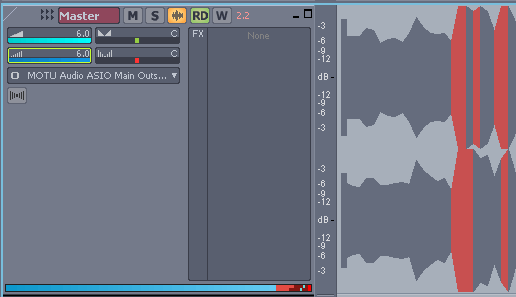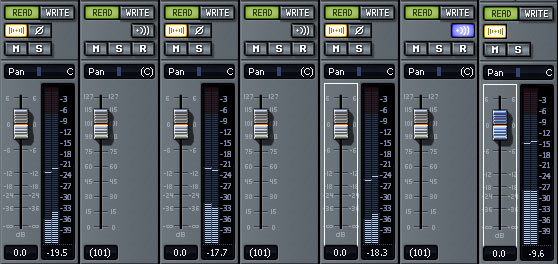… hitting the target …

As I hopefully approach the end of a short term hearing impairment, I’ve been looking for things to do that don’t require loud noises like singing.
I have been working on my mixing skills (as in controlling the relative levels of audio sources – not DJing). The thirteen songs for my record “Bits” are all in various states of completion, and in order to begin to unify the album as a whole, I’m going to set my peak baseline at -18db inside the box.
That might seem really low to some people, but as you add more and more tracks, these peak compound eventually resulting in a digital “over”. In the old days, analog recording devices could handle these overloads and many audio engineers used the quality of the saturation as a stylistic device. Think huge 70’s rock albums. That’s the sound of magnetic tape saturation.
Digital recorders hate overloads or “going into the red”. When a digital system goes over 0 db, it doesn’t know what to do with itself. The digital system tells your speaker to be in two different places at the same time … square wave city.
In a modern digital recording system, all the tracks are combined together mathematically inside the computer to create a stereo master bus. Different audio applications use a variety of methods for combining and adding the waveforms together. When mixing, people tend to have each channel as loud as it can go before it peaks, and then turn down the master bus to compensate.

Here is a bass line that peaks at -18 db.
[audio:bass.mp3]It sounds pretty quiet and most people would look at its levels in an audio application and think they were really low.
Here is the same bass line with some other instruments. They all have a maximum peak level of – 18 db.
[audio:all.mp3]When the instruments are combined to make this mix, it hits – 9.6 db! Imagine what would happen if you were mixing not five, but fifty tracks. You approach 0 db pretty fast, and that’s not good.
When your audio program’s master bus gets hit with a bunch of tracks that cause it to peak all the time, DON’T TURN DOWN THE MASTER BUS, turn down each track.
Digital recorders drop the number (truncate the data) when you mix and go over. Some programs do a better job at handling it than others.
I’m not suggesting that every track should peak at – 18 db. I’m just not going to let any track go above it.